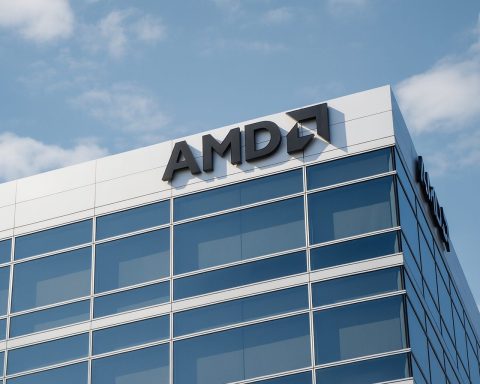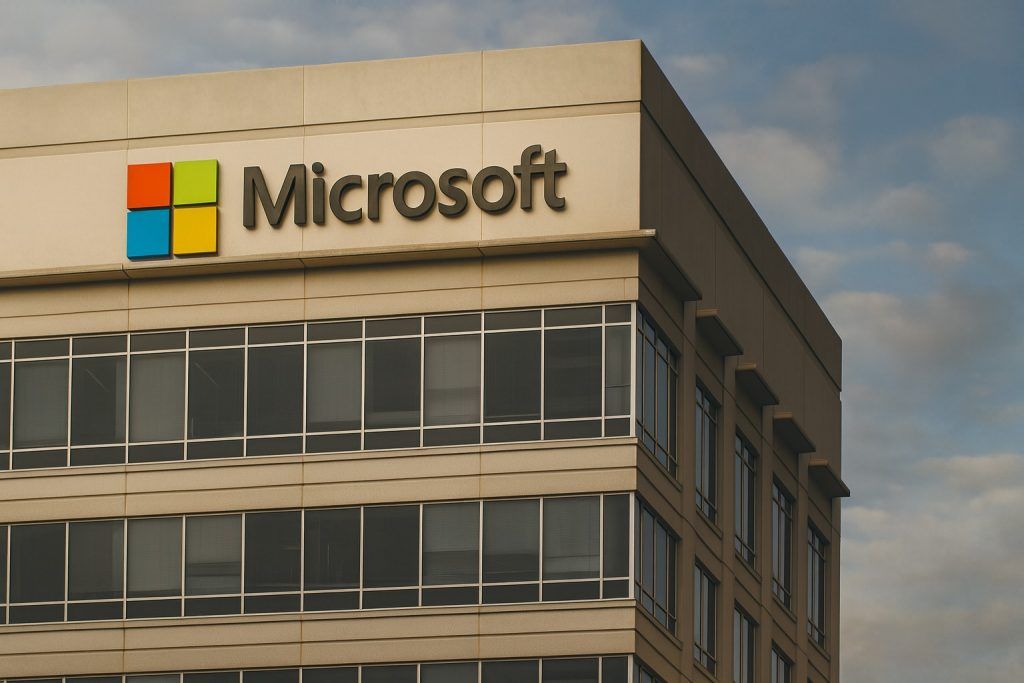- WMT’s long-term surge: Walmart stock is up roughly 470% over 15 years (about 680% if dividends are reinvested) [1], reflecting its transformation from a rural discounter to a digital retail powerhouse.
- Close to $1 trillion: Shares trade around $102 (Oct 2025), giving a market cap near $820–$830 billion – about 22% short of $1T [2] [3]. Analysts note a ~+22% price gain could push WMT into the $1T club by 2026 [4].
- Strong Q2 FY2026 results: In Q2 (ended July 31, 2025) Walmart reported $177.4B revenue (+4.8% YoY) [5]. High-margin segments drove growth: global e-commerce +25% YoY [6] (U.S. e-com +26% [7]), advertising sales +46% (up 31% in the U.S.) [8], and membership/loyalty fees +15% [9].
- Digital growth fueling profits: CFO John Rainey emphasized that “higher-margin areas like advertising and membership fees” are now major profit drivers [10]. Indeed, Walmart’s booming online and services businesses are expanding operating income even as traditional retailing grows more slowly.
- Stock momentum & valuations: WMT is up ~30% YTD, vastly outperforming peers (Target is down ~44%) [11]. The stock trades near its 52-week high (~$106 [12]) with a rich forward P/E (~36×) [13]. Analysts remain bullish: 30+ analyst teams rate WMT a Buy/Strong Buy with a consensus 12-month price target of about $111–$113 [14] [15] (roughly +10% upside from current levels).
- Dividend and splits history: Walmart has a 53-year streak of dividend raises; in early 2025 it hiked the quarterly payout ~13% to $0.235 (annualized $0.94) [16]. The company also split its stock 3-for-1 in 2024 (after a 25-year gap) to keep shares accessible. Historically, its IPO at $16.50 has become 6,144 shares worth about $620K today [17], underscoring the power of splits and compounding.
Walmart’s Trillion-Dollar Potential
In 2018 Apple became the first U.S. company to breach a $1 trillion market cap, with tech giants like Microsoft, Amazon, Alphabet, Meta, Tesla – and most recently Nvidia – joining the club. Brick-and-mortar giant Walmart could be next. Motley Fool analyst Jon Quast points out that Walmart’s current $820B market cap would only need a ~22% jump to hit $1T [18]. He notes the company has delivered a 470% total return in 15 years (680% with dividends) [19], thanks to its scale and diversification. This dramatic run, driven by repeat store visits and steady online growth, suggests the retailer is on track: “these tech titans could be joined by brick-and-mortar Walmart… in 2026” [20].
Walmart’s mix of essential groceries, value pricing and expanding digital services appeals even in a tough economy. Reuters reports analysts and retail strategists calling Walmart’s business model “a sweet spot” as cost-conscious consumers flock to its stores [21]. GlobalData’s Neil Saunders agrees, saying broad consumer trends remain favorable for Walmart since shoppers today “want to maximize bang for their buck” [22]. In other words, Walmart’s track record of stable growth and steady dividends makes it a relatively safe investment, even as it chases that $1T milestone.
Digital & High-Margin Growth Drives Earnings
Walmart’s recent earnings highlight this shift to higher-margin businesses. In the latest quarter its total revenue rose 4.8% to $177.4 billion [23]. Comparable U.S. store sales grew about 4.6%, but the real story was online and services: U.S. e-commerce soared +26% and international e-com +22%, giving a global e-commerce gain of ~25% [24] [25]. Meanwhile, the company’s digital ad unit Walmart Connect saw +31% growth in U.S. ad sales (46% when including its new Vizio media business) [26] [27]. Membership fees (from Walmart+ and Sam’s Club) jumped about 15% [28] as memberships climb (~27 million members, +35% YoY [29]).
These high-margin streams are fueling profits. As CFO John Rainey explained on the Q2 call, “contributions to operating income are increasingly influenced by… higher-margin areas like advertising and membership fees” [30]. In concrete terms, Walmart’s digital-led businesses are offsetting margin pressures in stores. For example, even though GAAP operating income fell due to some one-time charges, adjusted operating profit ticked up slightly, and Walmart actually beat Wall Street’s sales consensus [31] [32]. The company raised its full-year revenue and EPS guidance after the quarter, signaling confidence in the strength of these new growth engines [33] [34].
Stock Performance, Splits and Dividends
Walmart’s stock chart has been similarly impressive. After a 3-for-1 split in August 2024 (its first split in 25 years [35]), WMT traded under $35 pre-split, and today it sits just under $102 [36]. That’s near its 52-week high (~$106 [37]) and up roughly 30% year-to-date [38]. By comparison, retail peers like Target have stumbled (Target is down ~44% this year [39]) while online-centric names soar. Technical analysts note WMT has formed a bullish “flag” pattern and a breakout above ~$105 could target higher levels [40], though sentiment indicators are mixed in the short term.
Walmart’s valuation remains rich by historical standards (forward P/E in the mid-30s [41]) because investors are pricing in continued growth. It’s still below other membership retailers (Costco at ~49×P/E), reflecting Walmart’s lower-margin grocery base, but above Target (~11×). In any case, Wall Street’s view is clear: 30+ analysts have Buy or Strong Buy ratings on WMT [42]. Price targets cluster around $111–$113 [43]. MarketBeat notes an average target of $112.38 [44] (implying about +10% upside). Major firms are bullish – e.g. Bank of America lifted its WMT target to $125 [45] – and even bullish “outperform” ratings are common.
Shareholders are rewarded not just by price. Walmart boasts a 53-year dividend increase streak [46]. Its dividend yield is modest (~0.9% [47]) due to the high share price, but management recently approved the largest hike in over a decade: a 13% raise to $0.94 annualized [48]. The payout ratio remains conservative (~36% of earnings [49]), so further raises are likely if earnings hold up. Overall, investors benefit from the mix of capital gains and steady income that Walmart provides.
What the Experts Say
After the latest earnings, Wall Street experts had mixed reactions. RBC Capital’s Steven Shemesh warned that Walmart’s margins disappointed some: “Expectations were high for a margin beat and we didn’t get that,” he said, noting the stock saw a modest pullback on the news [50]. Indeed, Walmart’s gross margins were roughly flat as rising costs (tariffs, wages) ate into profits [51]. On the other hand, retail analysts emphasize Walmart’s strength in a tough environment. Neil Saunders of GlobalData remarked that Walmart’s core strategy — essentials and value — is well-aligned with current consumer behavior (“maximizing bang for their buck”) [52]. CEO Doug McMillon likewise pointed out that inventory and price strategies are helping Walmart manage inflationary pressures [53].
Looking ahead, Walmart’s own guidance calls for moderate sales growth in the high single digits. After Q2 it upped its full-year comps target to +3.75%–4.75% and EPS guidance to $2.52–$2.62 for FY2026 [54] [55]. This is consistent with external forecasts: TS2.Tech notes analysts expect roughly 3–4% sales growth and about $2.55 EPS [56]. If achieved, that would put Walmart on pace to match or slightly exceed its competitors’ growth. In any case, the Street clearly still likes WMT: the consensus rating is “Moderate Buy” [57], and many analysts see the stock as a long-term compounder.
A Broader Stock-Split Context
Walmart’s push toward a $1T cap comes amid a renewed “stock split” trend in the market. In 2024 tech giants Nvidia, Broadcom and even retail names like Chipotle and Walmart itself all executed splits. This year has been quieter, but insiders suggest splits aren’t over: Motley Fool predicts Netflix and Meta are prime candidates to split their high-priced shares in 2026 [58]. (Netflix, trading over $1,200, plans to triple its operating income by 2030 and reach $1T market cap [59] — a growth story that could justify a 7-for-1 split, Fool argues.) Meta, interestingly, has never split its stock despite being a top tech name [60].
Why does this matter? Stocks often split when management is confident about continued growth. As Nasdaq notes, companies only do splits if they believe they can grow their value [61]. Walmart has a history of doing just that – its early splits turned pennies into fortunes [62]. If Walmart were to hit $1T, a new split could be on the table to keep the share price “affordable” to retail investors, echoing moves by Netflix (which split 7-for-1 in 2015) and others.
Outlook and Forecast
In summary, Walmart today looks like a company heading in the right direction. It has recession-resistant fundamentals (steady grocery sales) combined with hot growth areas (online, ads, memberships). That’s why its stock is near record highs. If these trends continue, joining the $1 trillion club seems plausible. In fact, Motley Fool author Jon Quast concludes that, “it doesn’t seem to be a matter of if, but rather when” Walmart reaches that milestone [63].
Analysts’ 12-month forecasts echo cautious optimism: the consensus price target (~$112–$113) implies only modest upside, suggesting many believe Walmart is mostly priced for success already [64] [65]. However, catalysts remain. A breakout past ~$105 could spark a rally, and continued 15–30% growth rates in e-commerce and digital services could drive earnings higher. Management’s focus on cost control (e.g. automation investments) and consumer value should help cushion any economic slowdown.
For now, investors will watch Walmart’s next moves: Can it sustain these high-margin growth rates? Will it follow Netflix and Apple by splitting its stock again to mark a new phase? In any case, Walmart’s unique position – a blue-chip retailer fused with tech-style growth – makes it a story to watch. If it hits the $1T mark, it would join an elite list (Apple, Amazon, Microsoft, Google, Meta, Tesla, Nvidia) as one of the few companies ever to do so [66]. As one Motley Fool analyst puts it, the question is becoming about “when”, not if [67].
Sources: Recent Motley Fool and Yahoo Finance reports on Walmart [68] [69]; TS2.Tech market analysis [70] [71]; Walmart corporate releases [72]; Reuters news and analysis [73] [74]; investing.com stock data [75]. These detail Walmart’s latest earnings, stock performance, analyst forecasts and growth strategy. All statements are based on the cited reports as of Oct. 13, 2025.
References
1. www.nasdaq.com, 2. www.nasdaq.com, 3. ts2.tech, 4. www.nasdaq.com, 5. ts2.tech, 6. www.nasdaq.com, 7. ts2.tech, 8. www.nasdaq.com, 9. ts2.tech, 10. www.nasdaq.com, 11. ts2.tech, 12. www.investing.com, 13. ts2.tech, 14. ts2.tech, 15. www.marketbeat.com, 16. ts2.tech, 17. finviz.com, 18. www.nasdaq.com, 19. www.nasdaq.com, 20. www.nasdaq.com, 21. www.reuters.com, 22. www.reuters.com, 23. ts2.tech, 24. www.nasdaq.com, 25. ts2.tech, 26. www.nasdaq.com, 27. ts2.tech, 28. ts2.tech, 29. ts2.tech, 30. www.nasdaq.com, 31. www.reuters.com, 32. ts2.tech, 33. ts2.tech, 34. www.reuters.com, 35. www.nasdaq.com, 36. ts2.tech, 37. www.investing.com, 38. ts2.tech, 39. ts2.tech, 40. ts2.tech, 41. ts2.tech, 42. ts2.tech, 43. ts2.tech, 44. www.marketbeat.com, 45. www.marketbeat.com, 46. ts2.tech, 47. ts2.tech, 48. ts2.tech, 49. ts2.tech, 50. www.reuters.com, 51. www.reuters.com, 52. www.reuters.com, 53. www.reuters.com, 54. www.reuters.com, 55. www.marketbeat.com, 56. ts2.tech, 57. www.marketbeat.com, 58. www.nasdaq.com, 59. www.nasdaq.com, 60. www.nasdaq.com, 61. www.nasdaq.com, 62. finviz.com, 63. www.nasdaq.com, 64. ts2.tech, 65. www.marketbeat.com, 66. www.nasdaq.com, 67. www.nasdaq.com, 68. www.nasdaq.com, 69. www.nasdaq.com, 70. ts2.tech, 71. ts2.tech, 72. corporate.walmart.com, 73. www.reuters.com, 74. www.reuters.com, 75. www.investing.com







